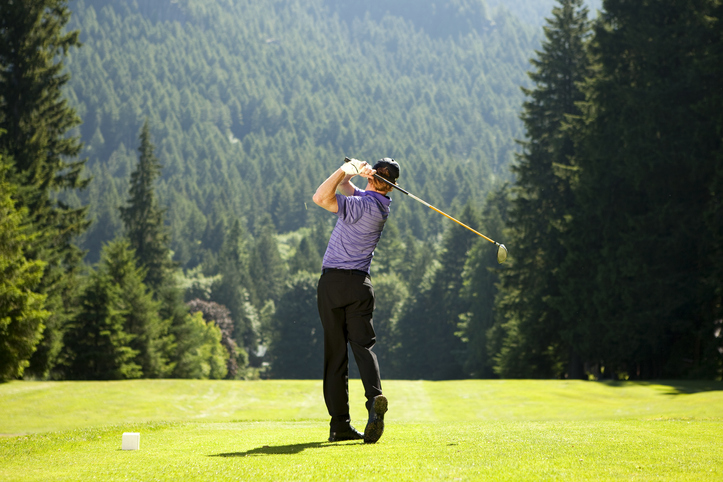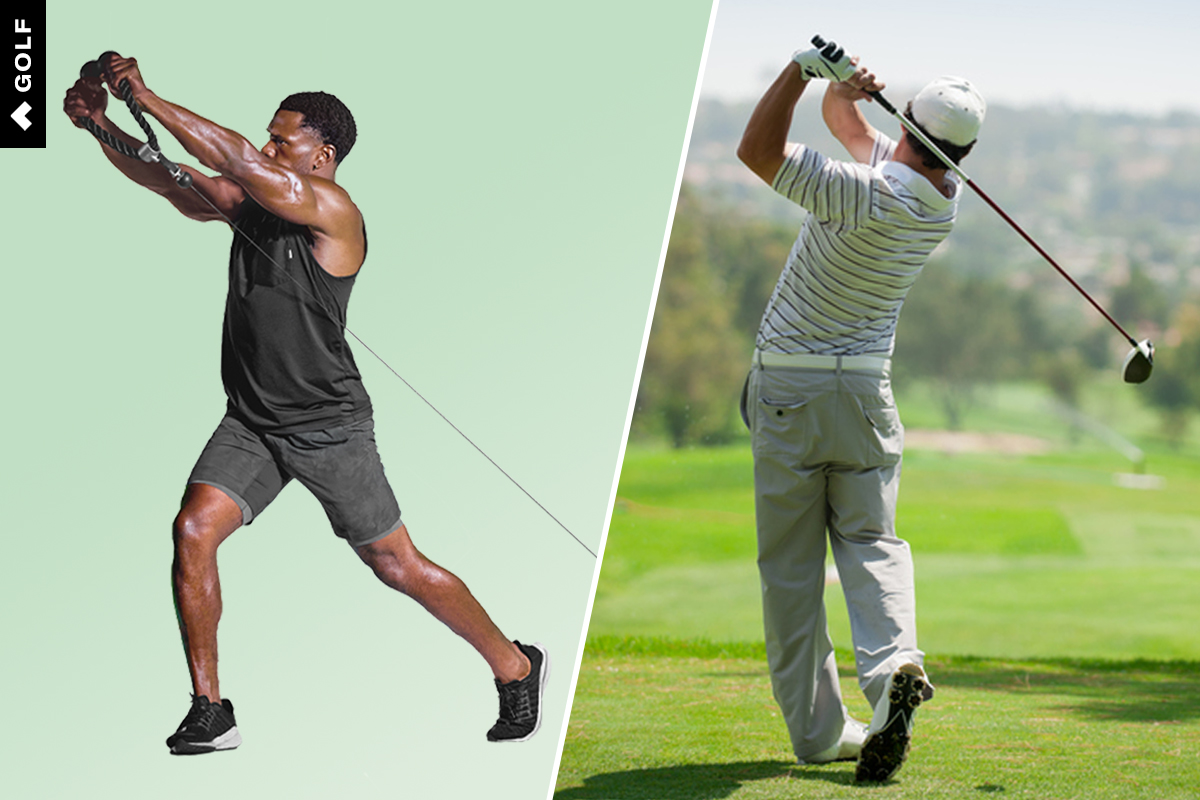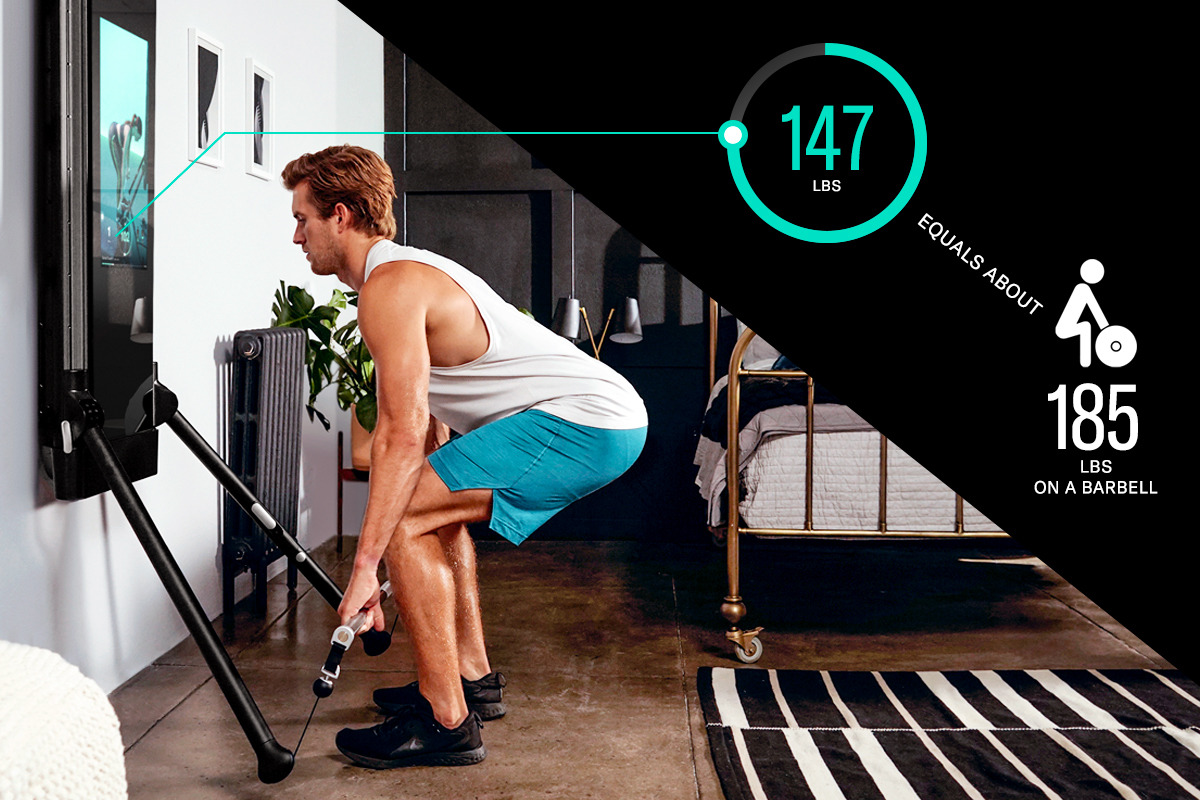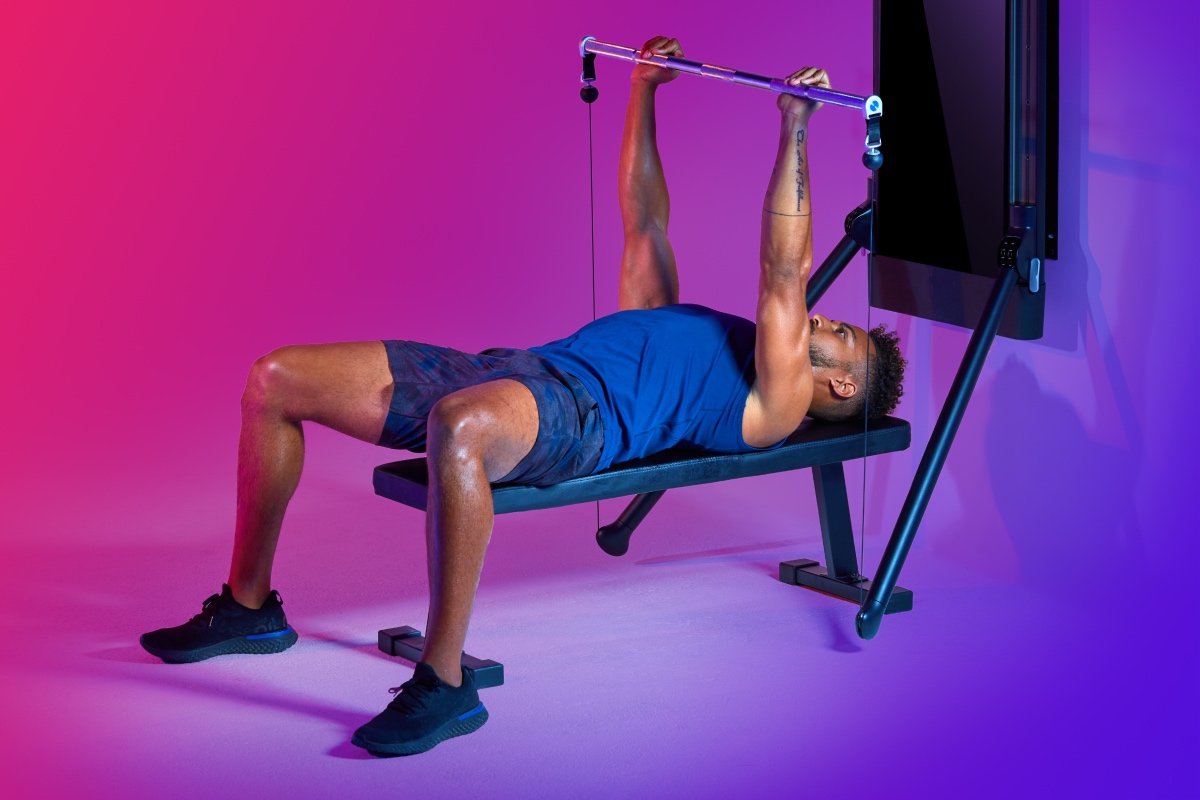These strength training techniques can help you improve your short game and get more power behind your swing.

In order to get better at golf, you need to train for golf-specific movements. But when you’d rather spend most of your time out on the course, you need to be smart and efficient about how you train off the course. That’s where Tonal comes in.
“[I’m] all about efficiency these days,” said Michelle Wie West, professional golfer, Tonal athlete and investor, and new mom in a post on Instagram.
The tour veteran and new mom relies on Tonal to squeeze in quick workouts that support her golf game especially after moving from San Francisco to Los Angeles. “I was really worried about keeping up with my fitness after moving to a completely new city, but Tonal has kept me on my toes and pushed me harder than I thought it ever could,” she said.
To tear a page straight from Wie West’s book, it’s crucial to add strength training to your overall fitness routine. Here, experts share their golf training tips for how to build more power behind your swing and improve your short game, all through strength training techniques you can access on Tonal.
Focus on form first
A proper and powerful golf swing is a complex movement. In order to swing well, you have to understand how to get into a neutral spine, hinge at the hips, load the hips, rotate through the torso, and then fire in the correct sequence to generate power from the ground if you’re going to hit a long drive. This all requires layering together a lot of smaller skills simultaneously.
If you address those skills in your training session, you won’t have to think about doing them correctly when you’re out on the golf course. It’s called muscle memory, and that’s why practicing movement as a skill is so important.
“Movement skills are an important part of training because learning how to move properly allows you to train more aggressively since you’re less likely to injure yourself when under weight, says Maddie Sheils, assistant golf coach at Stanford and former professional golfer. “Second, the movement skill exercises serve as an efficient total-body warmup. This can be useful when preparing for a lift or for a round of golf.”
Here is an example of what a basic movement skill session could look like:
- Cat-Cow: addresses the neutral spine
- Quadruped Rock: helps program the body to hold a neutral spine while hips are moving (the hinge)
- Seated Quadruped T-Spine Rotation: encourages rotation through the torso, not the low back
- Lateral Push to Base: a lower-body movement that helps connect everything above
- Rotational Lift or Chop: connects lower-body power to the rotation you will need
Never skip a warmup
Speaking of warmups, research published in the journal Biology of Sport shows that warmups specific to the explosive movement patterns required by a sport like golf improve your muscle performance during that sport.
A proper warmup should emphasize what you’ll be doing in the workout and address any movement deficiencies you may be experiencing that day. This might include dynamic movements, self massage, or even general movements that help you figure out how your body is feeling. Focus on finding where your imbalances are and lean into the warmup and use it as a tool to better prepare your body for your workout.
Work on your weaknesses
Golf-specific strength training isn’t just about swinging a 50-pound pipe to improve club speed, it’s also about working on your weaknesses.
In general, all golfers can benefit from adding mobility and stability training to their routines, says Dave Phillips, co-founder of the Titleist Performance Institute (TPI) in Oceanside, CA, who has devoted more than 25 years to working with elite golfers and is regarded as one of the best coaches in the world.
Tonal offers numerous mobility workouts you can perform on and off the trainer, including Mobility for Golfers, a full-body routine that focuses on specific areas that are key to being a strong and composed golfer. You can also jump into core-focused programs or workouts that will increase your overall stability like Core Stabilizer, which includes foundational moves that set you up for pain-free mobility.

Specify the exercises to your sport
Strength training can help you make major strides in your golf game, as long as your practice is on par. It can improve movement mechanics, reduce injury, and increase the strength and power behind your swing.
For most, your strength portion of the workout is when you lift the heaviest weight. Selecting the proper weight for every movement is challenging, which is why Tonal takes all the guesswork out of it by learning your personal abilities, selecting the right weight for every move, and then increasing the weight as you grow stronger.
One of the best strength-building movements for golfers is the Neutral Grip Deadlift. While this exercise primarily activates your hip extensors, your posterior chain including glutes and hamstrings, and your core, it also builds strength that can reduce lower back pain. Another great strength training movement for golfers is the Single-Arm Single-Leg Romanian Deadlift. This unilateral movement helps with hip stability, hip and hamstring strength, and anti-rotational strength for your core.
When it comes to the core, movements that train your core to resist motion like the Pallof Press, planks, stability lifts, and chops are more beneficial for golfers than moves like crunches, which simply work the superficial abdominal wall, because they improve your ability to swing a club while reducing injury.
You’ll also want to focus on accessory work. Depending on the golfer, a lot of the accessory work is anti-rotational with some isometric holds and rotator cuff work. It really depends on the golfer and the goals you set for the day.
Make sure to do your conditioning after the strength portion or on a separate day so that you get the biggest bang for your buck.


